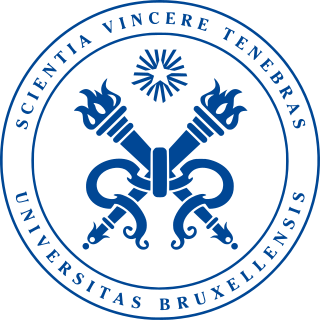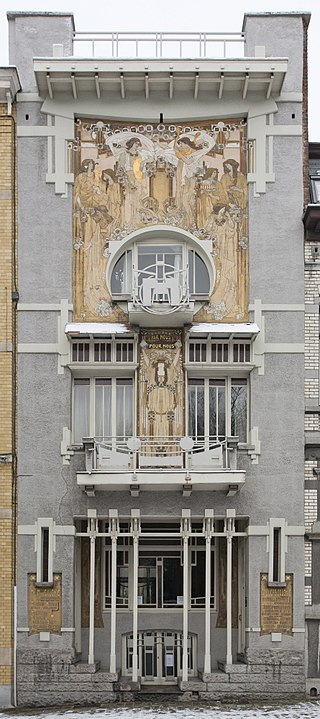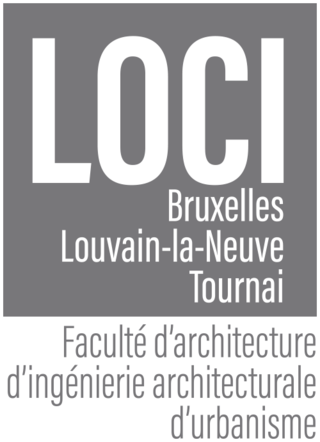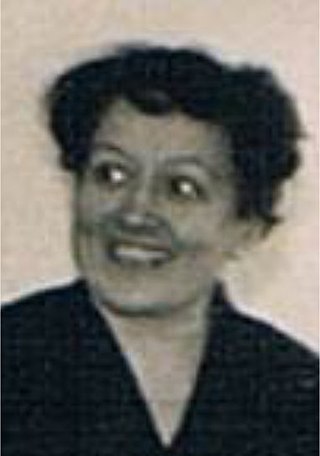
Brussels, officially the Brussels-Capital Region, is a region of Belgium comprising 19 municipalities, including the City of Brussels, which is the capital of Belgium. The Brussels-Capital Region is located in the central portion of the country and is a part of both the French Community of Belgium and the Flemish Community, but is separate from the Flemish Region and the Walloon Region, located less than 4 kilometres (2.5 mi) to the south. Historically Dutch-speaking, Brussels saw a language shift to French from the late 19th century. Nowadays, the Brussels-Capital Region is officially bilingual in French and Dutch, although French is the majority language and lingua franca. Brussels is also increasingly becoming multilingual. English is spoken widely and many migrants and expatriates speak other languages as well.

The Université libre de Bruxelles is a French-speaking research university in Brussels, Belgium. It has three campuses: the Solbosch campus, the Plaine campus and the Erasmus campus.

The Flemish Region, usually simply referred to as Flanders, is one of the three regions of Belgium—alongside the Walloon Region and the Brussels-Capital Region. Covering the northern portion of the country, the Flemish Region is primarily Dutch-speaking. With an area of 13,626 km2 (5,261 sq mi), it accounts for only 45% of Belgium's territory, but 58% of its population. It is one of the most densely populated regions of Europe with around 500/km2 (1,300/sq mi).

Baroness Fabienne Claire Nothomb, better known by her pen name Amélie Nothomb, is a Belgian Francophone novelist. Part of her childhood was spent in Asia.

Watermael-Boitsfort or Watermaal-Bosvoorde, often simply called Boitsfort in French or Bosvoorde in Dutch, is one of the 19 municipalities of the Brussels-Capital Region, Belgium. Located in the south-eastern part of the region, it is bordered by Auderghem, the City of Brussels, Ixelles, and Uccle, as well as the Flemish municipalities of Hoeilaart, Overijse and Sint-Genesius-Rode. In common with all of Brussels' municipalities, it is legally bilingual (French–Dutch).

Prince Emmanuel of Belgium is the younger son and third child of King Philippe and Queen Mathilde of Belgium. He is currently third in line to the throne of Belgium after his elder sister, Princess Elisabeth, and brother, Prince Gabriel.
Kikokushijo and kaigaishijo are Japanese-language terms referring to the children of Japanese expatriates who take part of their education outside Japan. The former term is used to refer to children who have returned to Japan, while the latter refers to such children while they are still overseas. They are referred to in English variously as "sojourn children" or "returnees". The term "third culture kids" is used by other countries.

Japanese in the United Kingdom include British citizens of Japanese ancestry or permanent residents of Japanese birth or citizenship, as well as expatriate business professionals and their dependents on limited-term employment visas, students, trainees and young people participating in the UK government-sponsored Youth Mobility Scheme.

The Francization of Brussels refers to the evolution, over the past two centuries, of this historically Dutch-speaking city into one where French has become the majority language and lingua franca. The main cause of this transition was the rapid, compulsory assimilation of the Flemish population, amplified by immigration from France and Wallonia.
Japanese people in France are French residents and citizens of Japanese ancestry, including both those who have settled in France permanently and those born in the country, along with a significant community of short-term expatriates who spend at most a few years in the country before moving on.

The Cauchie House is a historic town house in Brussels, Belgium. It was designed by the architect, painter, and designer Paul Cauchie, and built in 1905, in Art Nouveau style. Its façade is remarkable for its allegorical sgraffito decoration.

Auderghem or Oudergem is one of the 19 municipalities of the Brussels-Capital Region, Belgium. Located in the south-eastern part of the region, along the Woluwe valley and at the entrance to the Sonian Forest, it is bordered by Etterbeek, Ixelles, Watermael-Boitsfort, and Woluwe-Saint-Pierre, as well as the Flemish municipalities of Tervuren and Overijse. In common with all of Brussels' municipalities, it is legally bilingual (French–Dutch).

The Japanese School of Brussels a.s.b.l. is a Japanese international school located in Auderghem, Brussels. The school serves elementary and junior high school levels. It is Belgium's only Japanese international school. The Japanese Supplementary School of Brussels, a supplementary school operated on Saturdays, is held on the premises of the JSB.

The Institut Culturel Franco-Japonais – École Japonaise de Paris is a Japanese international school located in Montigny-le-Bretonneux, France, in the Paris Metropolitan Area. The school is located in proximity to Versailles. Japanese is the primary language of instruction while students also take French classes.

The Paris Metropolitan Area includes a Japanese community. In 2023, the official number of Japanese residents in Paris was 10,592, compared to 16,277 a decade prior.

The Faculty of Architecture, Architectural Engineering and Urban Planning, often called LOCI, is the 14th faculty of the University of Louvain, Belgium. It became an independent faculty in 2009, with the merger of three institutes founded between 1867 and 1882, and is active in Brussels (Saint-Gilles), Tournai and Louvain-la-Neuve.
UBI Business School, or UBI, is a private establishment of higher education located in Brussels, Luxembourg and Shanghai delivering BSc, MSc, MBA and DBA programmes in Business Studies and Administration. The school was founded as an asbl in Brussels on 4 April, 1992 and all programmes are validated by Middlesex University in the United Kingdom. Programmes at its European campuses are taught in English while the Shanghai campus programmes are taught in Mandarin Chinese.

Japanese people in Belgium or Japanese Belgians are Belgian citizens of Japanese ancestry.

Andrée Grandjean was a Belgian lawyer and a member of the Belgian Resistance during the Second World War. She was a leader in the Front de l'indépendance, a co-organiser of the Faux Soir newspaper act of resistance and a communist activist.















